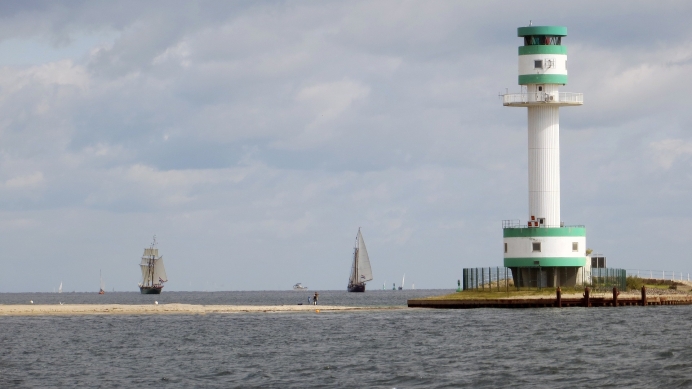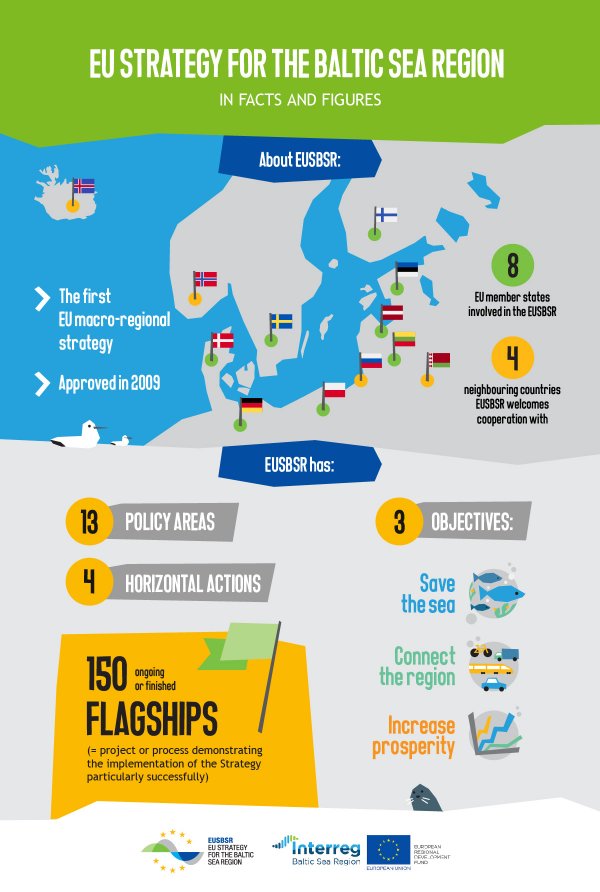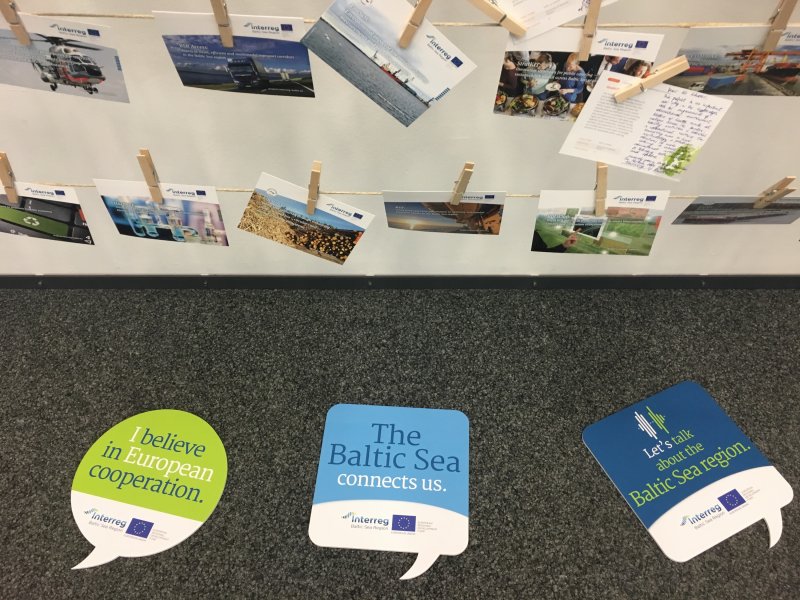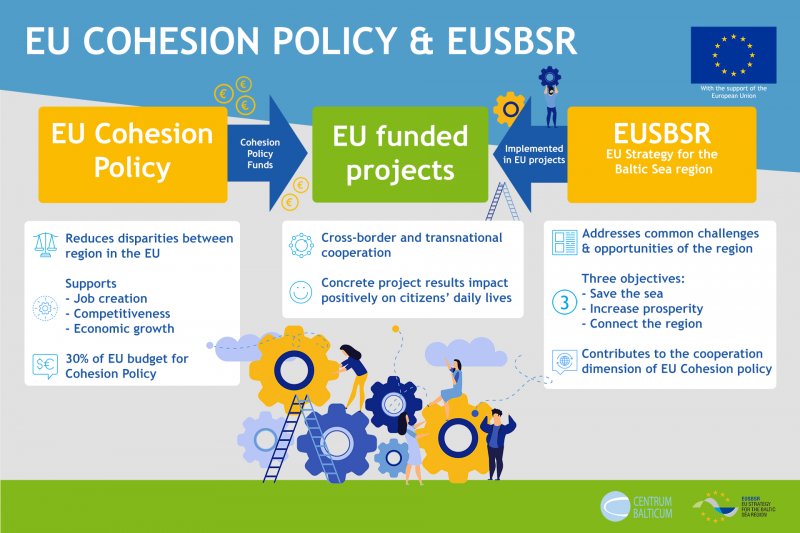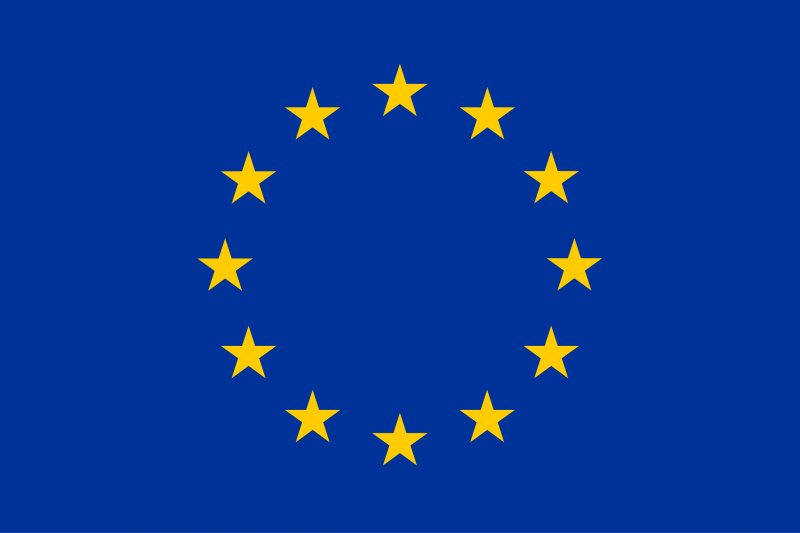EU Cohesion policy balances regional differences in the European Union
Simply put, EU Cohesion policy aims at reducing regional differences in the European Union. However, it is not targeted only at poorer regions but every country in the EU benefits from it.
Cohesion policy impacts EU citizens’ daily lives as it supports development of regions and works as a catalyst for investments. This helps to create new jobs, boosts economic growth and competitiveness.
The Cohesion policy is an important part of the EU budget: in 2014-2020 budget, over 30% was allocated to different financial instruments supporting cohesion policy. Cohesion policy is delivered through European Regional Fund (ERDF), European Social Fund (ESF) and Cohesion Fund. Each fund has a different target.
EU macro-regional strategies address common opportunities and challenges
The EU macro-regional strategies cover almost 2/3 of the Union, and represent new and experimental multi-level governance. The idea for macro-regional strategies sparked from realising that similar challenges and possibilities are often dictated by the geographical and cultural area. Countries in the same region can address these better through increased cooperation generated by the strategies.
Working together across borders is in the core of macro-regional strategies. Enhanced cooperation improves greatly the everyday lives of people living in the area as macro-regional strategies cover several topics ranging from education, health and environmental protection to innovation, transport and tourism.
Each macro-regional strategy is characterized by its surroundings. For the EUSBSR, it is the Baltic Sea that connects and inspires people around it to work together. The main fields of work in the EUSBSR are thus closely linked to the sea. The three objectives of the Strategy are Save the sea, Increase prosperity and Connect the region.
All macro-regional strategies are financially neutral, and do not receive any additional funding. They rely on existing funding, particularly European Regional Fund that finances cross-border cooperation.
How are macro-regional strategies linked to EU Cohesion policy?
The EUSBSR is concretely put into practice in projects. This is what links macro-regional strategies closely to the EU Cohesion policy as most of the projects implementing EUSBSR are funded from the cohesion policy funds.
As the strategies encourage countries to work together, they contribute particularly to the cooperation dimension of EU Cohesion policy. Strong territorial cooperation has a positive impact on economic, social and territorial cohesion.
Strategies involve actors from all levels of society to work towards a more prosperous region. They also bring the EU closer to citizens through concrete EU funded projects that engage and have a positive impact on our lives. Strong and prosperous macro-regions can therefore foster the development of European democracy and EU’s values, particularly in times when Europe is facing several challenges.
Macro-regional strategies can serve also as forerunners and act as a model for the whole EU. For example, work in the EUSBSR has contributed to the EU Strategy on adaptation to climate change and the Baltic Sea region has a long tradition in tackling marine litter, action often implemented through EU funded projects, showing example globally.
One example of the importance of macro-regional strategies is their links to countries outside the EU. The EUSBSR consists of eight EU member countries and in addition four neighbouring countries (Belarus, Iceland, Norway and Russia). As the Strategy works actively with non-EU member countries on regional level, it strengthens their links with the European Union, too. In the Baltic Sea Region, the sea and its well-being is a natural ground for cooperating beyond the EU borders.
Since all macro-regional strategies fit into the existing EU legislation and institution and receive no additional funding, they need to focus on specific actions. For the EUSBSR, environmental questions related to the Baltic Sea have been one of the driving forces of action. The Strategy creates a platform for different actors to collaborate and act for saving the sea.
EU funded projects that serve as these platforms of action and represent the EUSBSR objectives particularly well are called Flagships. Some of these Flagships have evolved from individual projects into networks and fora, such as the Baltic Sea Fisheries Forum, that contribute to dialogue and cooperation. This kind of transformation displays also sustainability of project funding and results for the benefit of the whole region.
FIND & DOWNLOAD THE INFOGRAPHICS IN ALL EUSBSR LANGUAGES ON FLICKR
THE ARTICLE IS AVAILABLE IN ALL EUSBSR LANGUAGES IN ATTACHEMENTS
Sources:
“10 Myths and Facts about EU Cohesion policy”
An introduction to EU Cohesion Policy 2014 - 2020 (2014)
Study on macro-regional strategies and their links with cohesion policy (2017)
The article is part of an European Union funded project "Cohesion through EUSBSR" promoting positive results of EU Cohesion policy in the Baltic Sea macro-region (EUSBSR).
The article reflects only the author's view and the European Commission is not responsible for any use that may be made of the information it contains.
With financial support from the European Union




